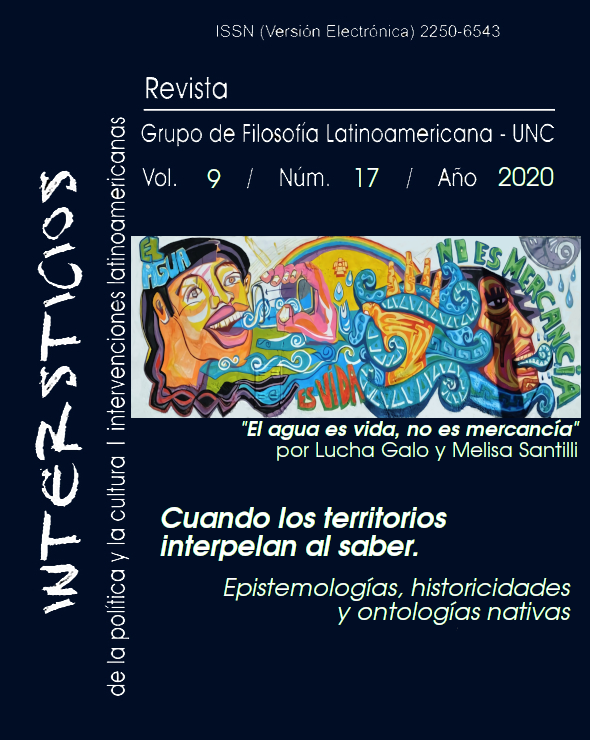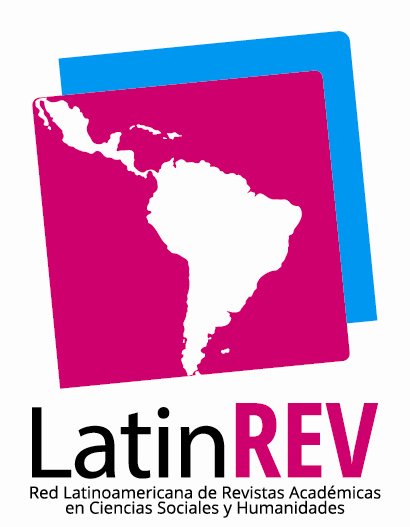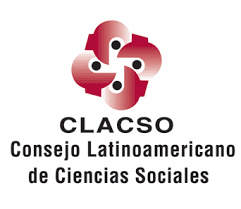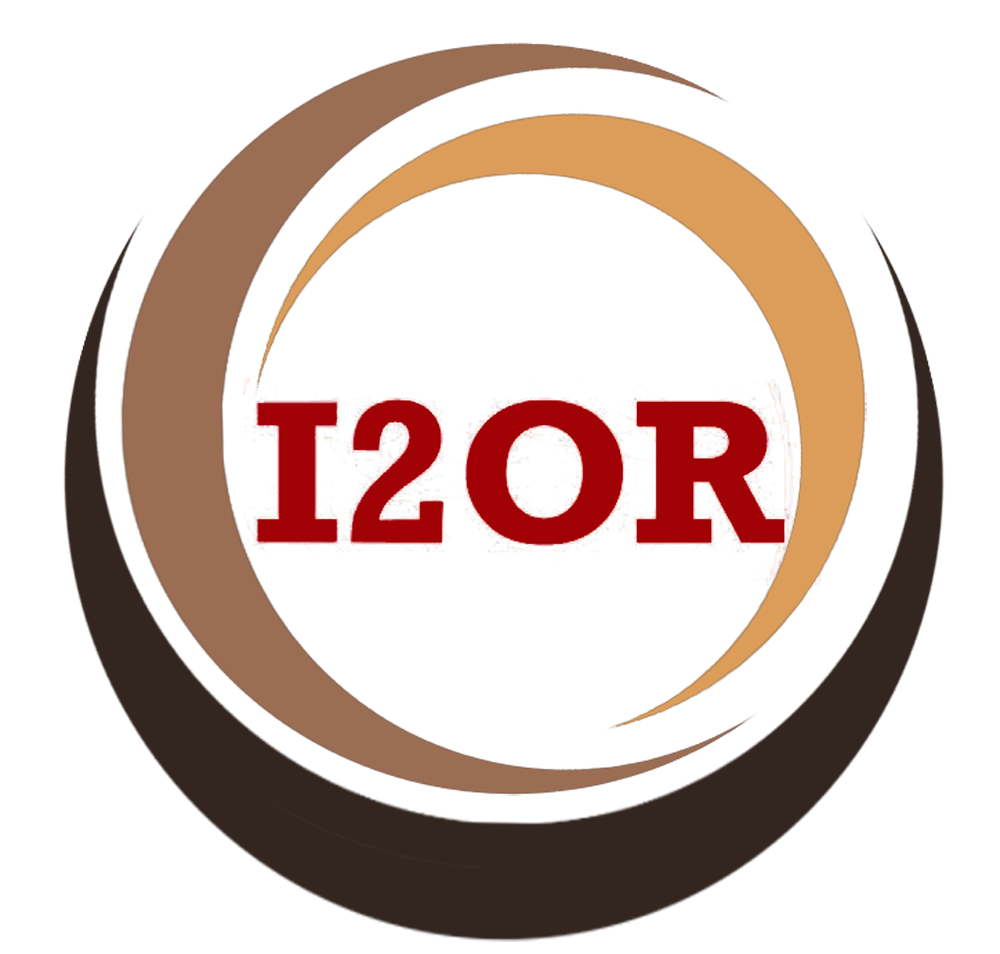The territory as an educational space: ethnographies with bilingual teachers and traditional Guaraní and Chané doctors.
Keywords:
territory, indigenous epistemologies, own pedagogies, ethnographies of educationAbstract
In this article, the process of construction of the territory as an educational space will be described and analyzed through the action research work that will be carried out with the bilingual teachers and traditional Guaraní-Chané physicians of northern Argentina, these new actors who challenge the rules of the intercultural education.
In the first place, an ethnohistorical reference will be made about the Guaraní people in the Bolivian south and in the north of Argentina, and then analyze the Continental Guaraní Map that shows the presence of this cross-border town in South America. Below is the relationship established between the territory and intercultural education, and how it plays in the training of both professionals (teachers and doctors). Secondly, the experience of the Ñande Reko (our way of living), the primary school curriculum that the Guaraní and Chané teachers have carried out from a participative and collaborative work among them, the Bilingual Intercultural Education Modality (Salta) and the accompaniment of the University of Salta. The other experience described is that of the Ñana Moa Reta Nursery of medicinal plants (diversity of medicines from the territory) where traditional teachers and doctors begin to weave a network of relationships and pedagogies from their own epistemology, where the territory is more than one.
Finally, it reflects on both experiences, highlighting that collaborative work considers the territory as an informal space for the transmission of traditional knowledge and knowledge, that is, as a space for the development of one's own education, and as a banner in the fight for land titles.
Downloads
References
Bolaños G; Tattay, L. 2012. La educación propia: una realidad de resistencia educativa y cultural de los pueblos. Revista Educación y Ciudad, n° 22, pp 45-56.
Casimiro Córboba, A.; Autora. 2017. “El maestro bilingüe guaraní. Escuela, estado y pueblos originarios”. Inédito.
Combès, I. 2005. Etnohistorias del Izoso Chané y chiriguanos en el Chaco Boliviano (S. XVI y XX). La Paz: PIEB y IFEA.
EMGC, Equipo Mapa Guaraní Continental. 2016. Cuaderno Mapa Guaraní Continental: Pueblos Guaraníes en Argentina, Bolivia, Brasil y Paraguay. Campo Grande: Gráfica Mundial.
Echazú Böschemeier, A. G. 2015. “Corpo de planta. Terapias y magias dxs curiosxs da baixa Amazonia do Peru, sob uma perspectiva situada de gênero y salud popular”. Doctorado en Antropología. Departamento de Posgrado en Antropología, Universidad de Brasilia.
Autora. 2017. “La coca y los modos de hacer: Una aproximación etnográfica a la agencia de la planta en terapias y rituales populares de Salta”. Doctorado en Antropología, Departamento de Posgrado Facultad de Filosofía y Letras, Universidad de Buenos Aires.
Autora. 2020a. “Los guaraní y los chané en el ahora. Chamanismo, religión y etnopolítica en el noroeste argentino”. En prensa.
Autora. 2020b. “Extractivismos y conflictos ontológicos: evidencias de la intersubstancialidad en una comunidad indígena”. Inédito.
Autora y Serapio, C. 2019. “Despojos y r-existencias, la lucha de una comunidad en la selva de Salta”. En Repensando el desarrollo rural en los territorios del norte argentino, compilado por Marcelo Rodríguez y Soraya Ataide, 193-220. Salta: Instituto de Desarrollo Rural.
Hirsch, S. 2004. Ser Guaraní en el noroeste argentino: variantes de la construcción identitaria. Revista de Indias, vol. LXIV, N° 230.
Melia, B. 2008. Guarani Retã 2008. Los pueblos guaraníes en las fronteras Argentina, Brasil y Paraguay. Cuadernillo. Asunción, CTI / CEPAG, pp 25-50.
Metraux, A. 1944. Le Shamanism chez les Indiens de l’Amérique du Sud Tropicale. Acta Americana, vol. II, pp. 195-219.
Pifarre, Fo. 1989. Los guaraní-chiriguano:historia de un pueblo. Centro de Investigación y promoción del campesinado: La Paz.
Riester, J. 1986. Aspectos del chamanismo de los Izoseño guaraní”. Revista Suplemento Antropológico, Vol. XXI, n° 1:263-283.
Weimar G.; Iño D. 2017. Epistemología pluralista, investigación y descolonización. Revista IISE , Vol. 9, Núm. 9, pp. 111-125.
Zamudio, J. 2012. Epistemología y educación. Tlalnepantla: Red Tercer Milenio.
Downloads
Published
How to Cite
Issue
Section
License

This work is licensed under a Creative Commons Attribution-NonCommercial-ShareAlike 4.0 International License.
Authors who have publications with this journal agree to the following terms:
a. Authors will retain their copyright and grant the journal the right of first publication of their work, which will simultaneously be subject to the Creative Commons Attribution License that allows third parties to share the work as long as its author and first publication in this journal are indicated.
b. Authors may adopt other non-exclusive license agreements for distribution of the published version of the work (e.g., deposit it in an institutional telematic archive or publish it in a monographic volume) as long as the initial publication in this journal is indicated.
c. Authors are allowed and encouraged to disseminate their work through the Internet (e.g., in institutional telematic archives or on their web page) after the publication process, which may produce interesting exchanges and increase citations of the published work (see The effect of open access).










